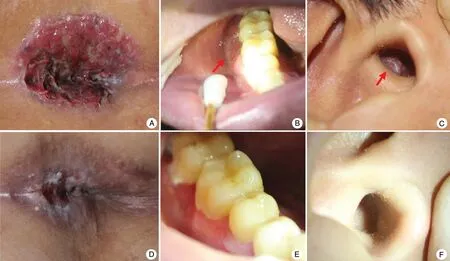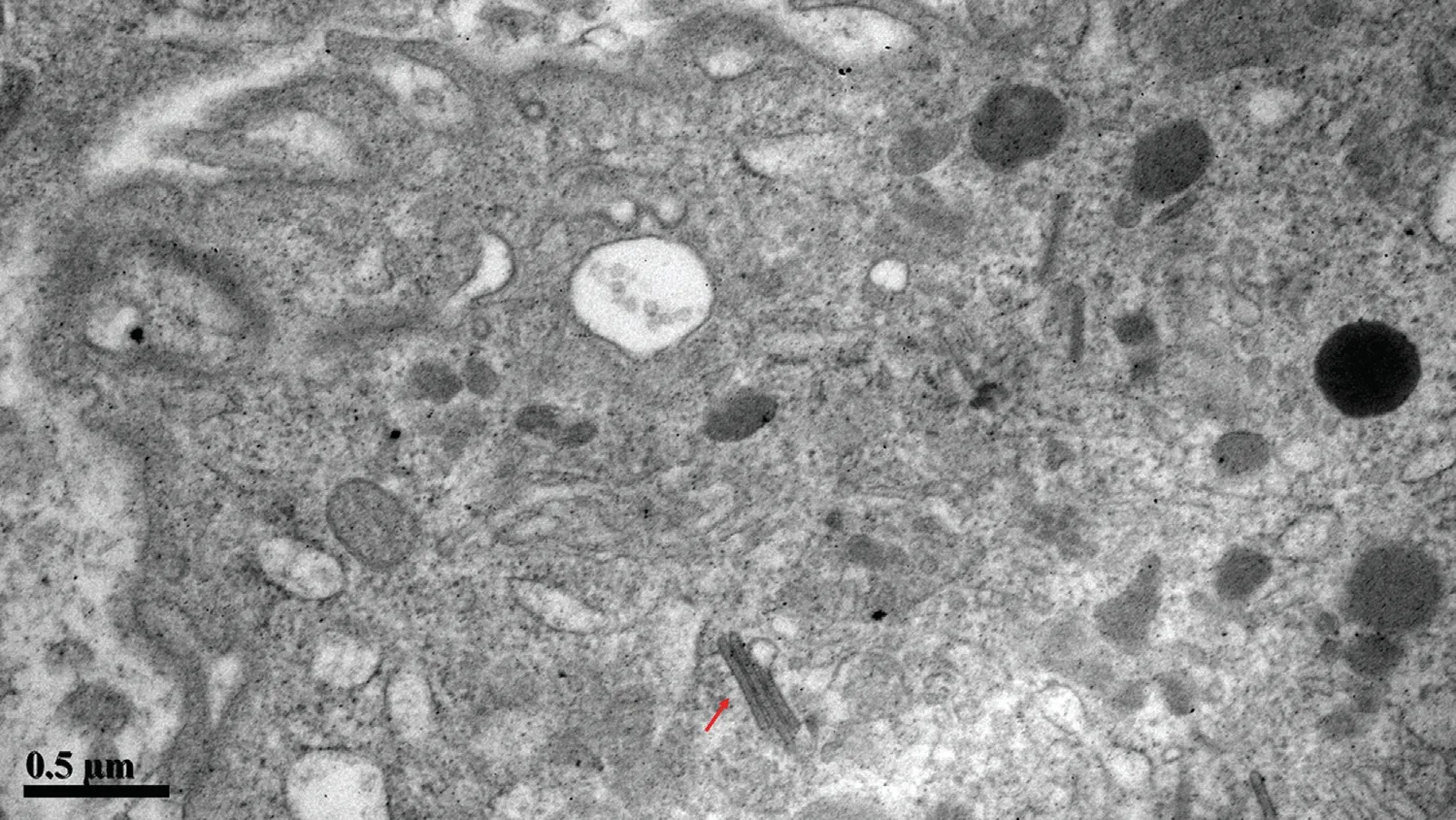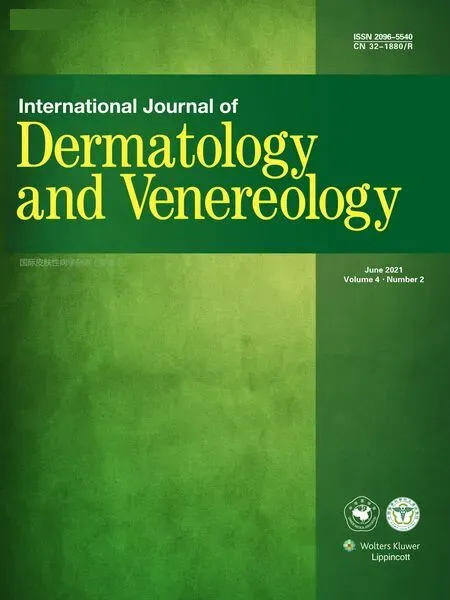Clinical Manifestations of Adult Langerhans Cell Histiocytosis with Multisystem Involvement Successfully Treated Using Chemotherapy
Nai-Yu Lin,Xu-Hua Tang,Jian-De Han*
Department of Dermatology,The First Affiliated Hospital,Sun Yat-sen University,Guangzhou,Guangdong 510080,China.
Abstract Introduction:Langerhans cell histiocytosis(LCH),the most common histiocytic disorder,characterized by the abnormal over production of histiocytes that tend to infiltrate single or multiple organ systems leading to significant tissue damage.
Keywords:Langerhans cell histiocytosis,histiocytosis,adult,multisystem involvement,chemotherapy
Introduction
Langerhans cell histiocytosis(LCH)is a rare histiocytic disorder with manifestations ranging from isolated bone lesions to multisystem diseases.1Children are commonly affected;in contrast,LCH is less common among adults.2Despite numerous reports describing the clinical features of LCH in adults,clinical diagnosis remains difficult.3Chemotherapy is the first-choice treatment for LCH with multisystem involvement.4In this report,we describe an adult patient who was diagnosed with LCH presenting as multisystem involvement and was successfully treated by chemotherapy.
Case report
A 23-year-old man presented with a progressive perianal lump and painful defecation during the past year;he had been diagnosed with hemorrhoids as reported in his medical history.He had also been diagnosed with central diabetes insipidus(DI)3 years prior and had gained 35kg during the past three years.The patient had recently noticed progressive hearing loss and discomfort in the oral cavity.
Physical examination revealed an approximately 3cm×5cm hyperplastic ulcer in the perianal region.Furthermore,he exhibited hyperplastic gingiva and a bean-sized mass in both ears(Fig.1).Routine tests such as a full blood cell count and abdominal ultrasound showed no abnormalities.Fluorine-18 2-fluoro-2-deoxy-D-glucose positron emission tomography and computed tomography and biopsy of the perianal lesion were performed for further exploration.Histological examination demonstrated diffuse infiltration of histiocytes with abundant eosinophils.Immunohistochemical staining of S100,langerin,and CD1a was positive,and further electron microscopic examination revealed classic Birbeck granules(Fig.2).

Figure 1.The clinical presentations of adult Langerhans cell histiocytosis with multisystem involvement.(A)Hyperplastic ulcer with a wet,rough surface in the perianal region.(B and C)Hyperplastic gingival(B),and bean-sized mass in the ear(C)were found.(D-F)Following therapy,the perianal lump and hyperplastic gingiva decreased in size and the mass in the ear disappeared.
The diagnosis of LCH was made based on the clinical and histopathological results.Consistent with the patient’s clinical condition,the Fluorine-18 2-fluoro-2-deoxy-Dglucose positron emission tomography and computed tomography scan demonstrated lesions with high standardized uptake values in the pituitary gland,gingiva,external auditory canal,and perianal region.Chemotherapy was begun with vinblastine(2mg intravenously once weekly),prednisolone(60mg/m2on days 1-28),and etoposide(200mg intravenously once every three weeks).The perianal lump decreased in size,while the DIassociated polydipsia and polyuria improved(Fig.1)after the second course.At the time of this writing,the patient was being followed up and had no other symptoms or signs except hair loss and a transient increase in his aminotransferase concentrations.The patient gave his informed consent for the case publication.

Figure 2.Classic Birbeck granules can be seen as rod-shaped granules with a central zipper-like striation(red arrow)under electron microscopy(×40,000).
Discussion
We have herein presented a case involving an adult diagnosed with LCH involving multiple organ systems that resolved following chemotherapy.LCH mainly affects children aged 1 to 3 years.However,it is not unusual in older patients.TheclinicalpictureofLCHishighly variable.Bone,skin,pituitary gland,lung,central nervous system,andlymphoidorgansarethemain organsinvolved,whereas liver and intestinal tract involvement is less frequently encountered.1Many adults exhibit symptoms for years before a correct diagnosis is made,and DI is often the initial symptom.5Skin involvement is the most noticeable symptom,and the most commonly affected sites are the craniofacial region,trunk,and perineum.In this case,the patient presented with a progressive perianal lump,the differential diagnoses of which should include extramammary Paget disease,proliferative pemphigus,and Bowen disease,among other conditions.However,the lesions in this patient were characterized by well-demarcated papules and punched-out ulcerations.In such cases,histopathological evaluation of suspicious lesions and immunohistochemical examination are necessary for a final diagnosis.
Because of the heterogeneous presentation of LCH,treatment recommendations are based on the extent of the disease.3Multisystem LCH is defined as LCH affecting two or more organs/systems with or without involvement of“high-risk organs”(hematopoietic system,liver,and/or spleen);however,the involvement of such organs signifies a worse prognosis.6Chemotherapy is the first-line treatment for multisystem or multifocal single-system LCH in adults.4Vemurafenib was also recently found to be useful for systemic treatment,as the V600E mutation in the BRAF gene was identified in more than half of samples from patients with LCH during the last decade.3,7Although no high-risk organs were involved in our patient,systemic chemotherapy was started because of the involvement of multiple organs.
We have herein summarized the characteristic features of LCH involving the perianal area,which can aid dermatologists in achieving a timely diagnosis.However,a general consensus must be established for LCH involving multiple symptoms and organs.Positron emission tomography and computed tomography may be useful to determine general involvement of lesions in patients with LCH.
Acknowledgments
We thank the professors from the Hematology Department of The First Affiliated Hospital,Sun Yat-sen University,for their support in determining the chemotherapy regimen.
- 国际皮肤性病学杂志的其它文章
- The Power of Molecular Genetics in Understanding Heritable Skin Disorders:Introduction to the Special Theme on Genodermatosis
- Piloleiomyoma
- Eruptive Cutaneous Collagenoma:Report of Two Cases
- Urethral Orifice Genital Herpes Caused by HSV-1 in a Female Patient:A Case Report
- The Association of Psoriasis and Obesity:Focusing on IL-17A-Related Immunological Mechanisms
- Resveratrol Inhibits Secretion of Interleukin 8 by Regulation of Autophagic Flux in Ultraviolet B-stimulated Keratinocytes

